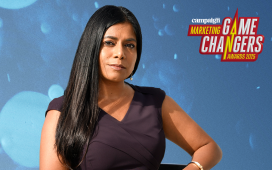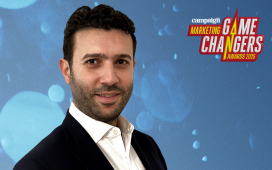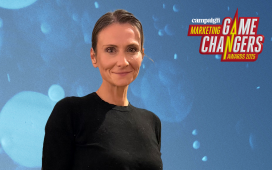 Cheil MEA’s Adeline Chew on the year ahead for experiential marketing.
Cheil MEA’s Adeline Chew on the year ahead for experiential marketing.Experiential marketing isn’t just a buzzword; it’s a powerful way for brands to connect with their audience on a deeper level. It’s about creating meaningful interactions and memorable experiences that resonate long after the moment has passed.
As we look ahead to 2025, it’s essential to reflect on how this approach has transformed, especially in the Middle East, and why it remains incredibly relevant for brands and products today.
The Covid curveball
The Covid-19 pandemic turned the world upside down. For many brands, this period was a wake-up call, urging them to reassess how they connect with customers. Experiential marketing emerged as a beacon of hope and innovation, particularly in the Middle East, where cultural richness and diversity provide fertile ground for creative engagement.
Throughout the pandemic, restrictions on physical gatherings led brands to pivot towards more immersive and engaging experiences. Whether it was virtual events, online workshops, or interactive social media campaigns, brands quickly realised that people crave connection – regardless of the medium. In this region, we saw an incredible surge in experiential marketing efforts, as brands sought to foster a sense of community and connection amid the uncertainty.
Read more predictions for 2025 from industry leaders here.
Experiential marketing thrived because it addressed a fundamental human need: the desire to connect and engage. It offered something more than just a transactional interaction; it created an environment where consumers could participate, share and feel valued. As we move into 2025, it’s clear that this evolution will continue, and brands in the Middle East are poised to lead the charge.
Navigating the complexities of brand utilisation
While the growth of experiential marketing has been exciting, it hasn’t come without its challenges. Many brands have embraced innovative strategies, from immersive pop-up events to interactive digital experiences that blur the lines between online and offline engagement. However, a few hurdles have emerged along the way.
One significant concern is the over-reliance on technology. In our quest for sophistication and innovation, we must remember that technology should enhance – not overshadow – the human experience. When brands utilise complex tools without a clear purpose, they risk alienating their audience rather than engaging them. Furthermore, while the trend of mass personalisation offers exciting opportunities to tailor experiences to individual preferences, it has a potential pitfall. When every interaction is hyper-personalised, consumers can feel like they’re being treated as data points rather than valued individuals. True personalisation comes from understanding the human behind the data and creating authentic connections that echo that understanding.
It’s crucial for us to strike a balance, utilising technology to enhance the consumer experience while remembering that at the heart of it all, we are humans connecting with other humans.
What to expect in experiential marketing by 2025
Looking forward, the future of experiential marketing is bright and full of possibilities. In 2025, we can expect to see an even greater integration of technologies such as mixed reality (MX), allowing brands to create experiences that shock, inspire and engage consumers in ways we can only begin to imagine.
Imagine walking into a store and being greeted by a virtual assistant that understands your preferences, curates tailored experiences just for you, and even transports you to another world within the store’s walls. The blend of physical and digital spaces will create richer, more engaging marketing landscapes where consumers feel like they are part of the brand’s story.
Moreover, as consumers become increasingly conscious of their impact on the world, brands will need to prioritise sustainability and ethical practices in their experiential offerings. More than ever, people want to support brands that reflect their values, and they crave experiences that honour and protect our planet. Brands that lean into this shift and create experiences that celebrate sustainability will surely resonate more deeply with their audiences.
Expectations for 2025 also include a rising demand for community-driven experiences. Brands must begin to think about how they can create experiences that foster connections between consumers, not just between brands and consumers. Our world is becoming increasingly fragmented, and people are seeking spaces where they can connect, share and collaborate. Facilitating community experiences will not only attract new customers but also strengthen relationships with existing ones.
The heart of experiential marketing: why it matters
You may wonder, why is experiential marketing so significant for brands and products? The answer lies in its fundamental ability to create memories that last. In a landscape flooded with advertisements and promotional messages, consumers want more than just a transaction; they crave genuine connections.
Experiential marketing is about crafting stories and experiences that resonate with people’s emotions. It allows brands to move beyond the confines of traditional advertising and instead create moments that inspire, entertain and connect. When consumers engage with a brand on an experiential level, they are more likely to remember that brand, share their experiences with others and develop lasting loyalty.
In a world where brand loyalty often feels fleeting, experiential marketing provides an anchor. It transforms passive observers into active participants, allowing them to feel seen, heard and valued.
The future of experiential marketing? It’s going to be incredible. As we’re gearing up for 2025, I can’t help but feel excited about what’s coming our way. Here’s the thing – we’re all on this wild ride together. Brands that really get it, the ones that tune into what makes us tick, they’re going to blow our minds with experiences we’ll be talking about for years. And let’s be real, that’s what we’re all after, right? Those goosebump moments, the stories we can’t wait to share. Experiential marketing isn’t just some flashy gimmick. It’s the heartbeat of how brands are going to connect with us moving forward. Every time a brand reaches out, it’s a chance to create a little bit of magic. Whether it’s a mind-blowing event, a touching social media moment, or just a clever ad that makes you smile – it all adds up to something pretty special.
By Adeline Chew, Head of Brand Experience, Cheil MEA









